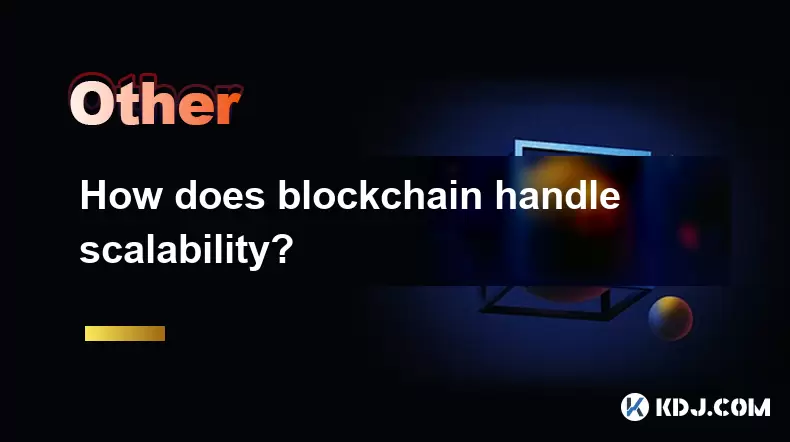-
 Bitcoin
Bitcoin $112400
-1.07% -
 Ethereum
Ethereum $3409
-3.27% -
 XRP
XRP $2.784
-6.60% -
 Tether USDt
Tether USDt $0.9997
-0.03% -
 BNB
BNB $739.3
-2.09% -
 Solana
Solana $158.0
-2.90% -
 USDC
USDC $0.9998
-0.02% -
 TRON
TRON $0.3213
-0.94% -
 Dogecoin
Dogecoin $0.1929
-5.01% -
 Cardano
Cardano $0.6974
-2.82% -
 Hyperliquid
Hyperliquid $36.69
-2.31% -
 Sui
Sui $3.327
-4.80% -
 Stellar
Stellar $0.3672
-5.18% -
 Chainlink
Chainlink $15.65
-3.07% -
 Bitcoin Cash
Bitcoin Cash $525.0
-1.68% -
 Hedera
Hedera $0.2291
-6.00% -
 Avalanche
Avalanche $20.91
-2.96% -
 Ethena USDe
Ethena USDe $1.000
0.00% -
 Toncoin
Toncoin $3.520
-1.12% -
 UNUS SED LEO
UNUS SED LEO $8.968
0.14% -
 Litecoin
Litecoin $105.7
0.26% -
 Shiba Inu
Shiba Inu $0.00001181
-1.79% -
 Polkadot
Polkadot $3.492
-2.08% -
 Uniswap
Uniswap $8.800
-3.10% -
 Dai
Dai $0.9999
-0.01% -
 Monero
Monero $289.9
-3.17% -
 Bitget Token
Bitget Token $4.243
-1.27% -
 Pepe
Pepe $0.00001006
-3.67% -
 Cronos
Cronos $0.1248
-5.68% -
 Aave
Aave $249.7
-2.50%
What is a 51% attack and how to prevent it?
A 51% attack allows an attacker to control a blockchain by double-spending, halting transactions, and reversing them, severely impacting trust and causing financial losses.
Apr 17, 2025 at 01:07 am

A 51% attack is a type of attack on a blockchain network where a single entity or group gains control of more than half of the network's mining or staking power. This control allows the attacker to manipulate the blockchain by double-spending coins, preventing the confirmation of new transactions, and even reversing transactions that were previously completed. This article will delve into the specifics of a 51% attack, its implications, and the strategies that can be employed to prevent such an attack.
Understanding the Mechanics of a 51% Attack
A 51% attack occurs when an attacker controls the majority of the network's hashing power. In a proof-of-work (PoW) system, this means that the attacker has more computing power than the rest of the network combined. In a proof-of-stake (PoS) system, it means that the attacker controls more than half of the staked coins.
The primary goal of a 51% attack is to alter the blockchain's transaction history. Here's how it works:
- Double Spending: The attacker can spend the same coins twice by creating a new block that includes the second transaction and then using their majority power to make this new block the longest chain, which the network will accept as the valid chain.
- Preventing Transactions: By controlling the majority of the network, the attacker can prevent other miners from confirming new transactions, effectively halting the network.
- Reversing Transactions: The attacker can create a new chain that excludes certain transactions, effectively reversing them.
The Implications of a 51% Attack
The consequences of a 51% attack can be severe for a cryptocurrency.
- Loss of Trust: If users lose trust in the security of the network, the value of the cryptocurrency can plummet.
- Financial Losses: Double-spending can lead to significant financial losses for merchants and other users who accept the cryptocurrency.
- Network Disruption: Preventing transactions can disrupt the normal functioning of the network, causing delays and inconvenience.
Historical Examples of 51% Attacks
Several cryptocurrencies have experienced 51% attacks in the past.
- Bitcoin Gold (BTG): In May 2018, Bitcoin Gold suffered a 51% attack that resulted in the double-spending of approximately $18 million worth of BTG.
- Ethereum Classic (ETC): In January 2019, Ethereum Classic was hit by a 51% attack, leading to the theft of around $1.1 million in ETC.
- Verge (XVG): In April 2018, Verge experienced multiple 51% attacks, causing significant disruption to the network.
Preventing a 51% Attack
Preventing a 51% attack requires a combination of technical and economic measures. Here are some strategies that can be employed:
Increasing Network Decentralization
Decentralization is key to preventing a 51% attack. The more decentralized a network is, the harder it is for a single entity to gain control of the majority of the hashing power.
- Encourage More Miners: By incentivizing more individuals and organizations to participate in mining, the network becomes more decentralized.
- Use of Mining Pools: Mining pools can help distribute the hashing power more evenly across the network, reducing the risk of a single entity gaining control.
Implementing Stronger Consensus Mechanisms
Consensus mechanisms are the rules that govern how transactions are verified and added to the blockchain. Strengthening these mechanisms can make it more difficult for an attacker to execute a 51% attack.
- Proof-of-Stake (PoS): Some argue that PoS systems are more resistant to 51% attacks because an attacker would need to control a majority of the staked coins, which is often more difficult than controlling hashing power.
- Byzantine Fault Tolerance (BFT): BFT consensus mechanisms require a supermajority (often two-thirds) of nodes to agree on a transaction, making it harder for an attacker to manipulate the network.
Monitoring and Alert Systems
Monitoring and alert systems can help detect a 51% attack early, allowing the network to take action before significant damage is done.
- Real-Time Monitoring: Implementing real-time monitoring of the network's hashing power can help detect unusual activity that may indicate an attack.
- Alert Systems: Setting up alert systems that notify miners and users of potential attacks can help mobilize a response quickly.
Economic Measures
Economic measures can also play a role in preventing a 51% attack.
- Penalties for Malicious Behavior: Implementing penalties for miners who engage in malicious behavior can deter potential attackers.
- Incentives for Honest Mining: Providing additional incentives for miners who contribute to the security and stability of the network can encourage more honest mining.
Steps to Take if a 51% Attack Occurs
If a 51% attack does occur, there are several steps that can be taken to mitigate the damage and restore the network's integrity.
- Identify the Attack: The first step is to confirm that a 51% attack is indeed taking place. This can be done by monitoring the network's hashing power and transaction history.
- Alert the Community: Once the attack is confirmed, it's crucial to alert the community, including miners, users, and exchanges, so they can take appropriate action.
- Implement a Hard Fork: In some cases, implementing a hard fork may be necessary to reverse the effects of the attack and restore the blockchain to its pre-attack state.
- Strengthen Security Measures: After the attack, it's important to review and strengthen the network's security measures to prevent future attacks.
Frequently Asked Questions
Q: Can a 51% attack be launched on any blockchain?
A: While theoretically possible on any blockchain, the feasibility of a 51% attack varies depending on the network's size, decentralization, and consensus mechanism. Larger and more decentralized networks are generally more resistant to such attacks.
Q: How can individual users protect themselves from a 51% attack?
A: Individual users can protect themselves by waiting for multiple confirmations before considering a transaction final, using secure wallets, and staying informed about the security status of the networks they use.
Q: Are there any cryptocurrencies that are immune to 51% attacks?
A: No cryptocurrency is completely immune to 51% attacks, but some are more resistant due to their design and security measures. For example, networks with high decentralization and strong consensus mechanisms are less vulnerable.
Q: What role do exchanges play in preventing 51% attacks?
A: Exchanges can help prevent 51% attacks by monitoring the networks they support, implementing withdrawal limits, and collaborating with other stakeholders to enhance network security.
Disclaimer:info@kdj.com
The information provided is not trading advice. kdj.com does not assume any responsibility for any investments made based on the information provided in this article. Cryptocurrencies are highly volatile and it is highly recommended that you invest with caution after thorough research!
If you believe that the content used on this website infringes your copyright, please contact us immediately (info@kdj.com) and we will delete it promptly.
- Ruvi AI: The AI Token on Cardano Set to Dominate After CMC Listing
- 2025-08-03 04:50:12
- Bitcoin, MicroStrategy, and Institutional Confidence: A Bullish Trifecta?
- 2025-08-03 04:30:12
- Ruvi AI Token: Price Hike Imminent After Presale Milestone?
- 2025-08-03 04:30:12
- Ruvi AI: The Millionaire Maker with a Price Spike on the Horizon?
- 2025-08-03 02:50:12
- DOGE, Utility Coins, and Smart Money: A New Era for Crypto Investing?
- 2025-08-03 02:50:12
- Punisher Coin: Is This Meme Coin the Crypto Investment with 100x ROI Potential?
- 2025-08-03 03:30:12
Related knowledge

What is the difference between on-chain and off-chain transactions?
Aug 02,2025 at 04:22pm
Understanding On-Chain TransactionsOn-chain transactions refer to digital asset transfers that are recorded directly on a blockchain ledger. These tra...

What is the double-spending problem and how does blockchain prevent it?
Aug 02,2025 at 01:07pm
Understanding the Double-Spending ProblemThe double-spending problem is a fundamental challenge in digital currency systems where the same digital tok...

What is the difference between a blockchain and a database?
Aug 01,2025 at 09:36pm
Understanding the Core Structure of a BlockchainA blockchain is a decentralized digital ledger that records data in a series of immutable blocks linke...

How does blockchain handle scalability?
Aug 02,2025 at 02:58pm
Understanding Blockchain Scalability ChallengesBlockchain scalability refers to a network's ability to handle an increasing volume of transactions wit...

What are the different types of blockchains?
Aug 03,2025 at 03:01am
Public Blockchains: Open and Decentralized NetworksPublic blockchains are the most widely recognized type of blockchain, characterized by their open a...

What is a hash in a blockchain?
Aug 02,2025 at 05:28am
Understanding the Concept of Hash in BlockchainA hash in the context of blockchain technology refers to a unique digital fingerprint generated by a cr...

What is the difference between on-chain and off-chain transactions?
Aug 02,2025 at 04:22pm
Understanding On-Chain TransactionsOn-chain transactions refer to digital asset transfers that are recorded directly on a blockchain ledger. These tra...

What is the double-spending problem and how does blockchain prevent it?
Aug 02,2025 at 01:07pm
Understanding the Double-Spending ProblemThe double-spending problem is a fundamental challenge in digital currency systems where the same digital tok...

What is the difference between a blockchain and a database?
Aug 01,2025 at 09:36pm
Understanding the Core Structure of a BlockchainA blockchain is a decentralized digital ledger that records data in a series of immutable blocks linke...

How does blockchain handle scalability?
Aug 02,2025 at 02:58pm
Understanding Blockchain Scalability ChallengesBlockchain scalability refers to a network's ability to handle an increasing volume of transactions wit...

What are the different types of blockchains?
Aug 03,2025 at 03:01am
Public Blockchains: Open and Decentralized NetworksPublic blockchains are the most widely recognized type of blockchain, characterized by their open a...

What is a hash in a blockchain?
Aug 02,2025 at 05:28am
Understanding the Concept of Hash in BlockchainA hash in the context of blockchain technology refers to a unique digital fingerprint generated by a cr...
See all articles

























































































